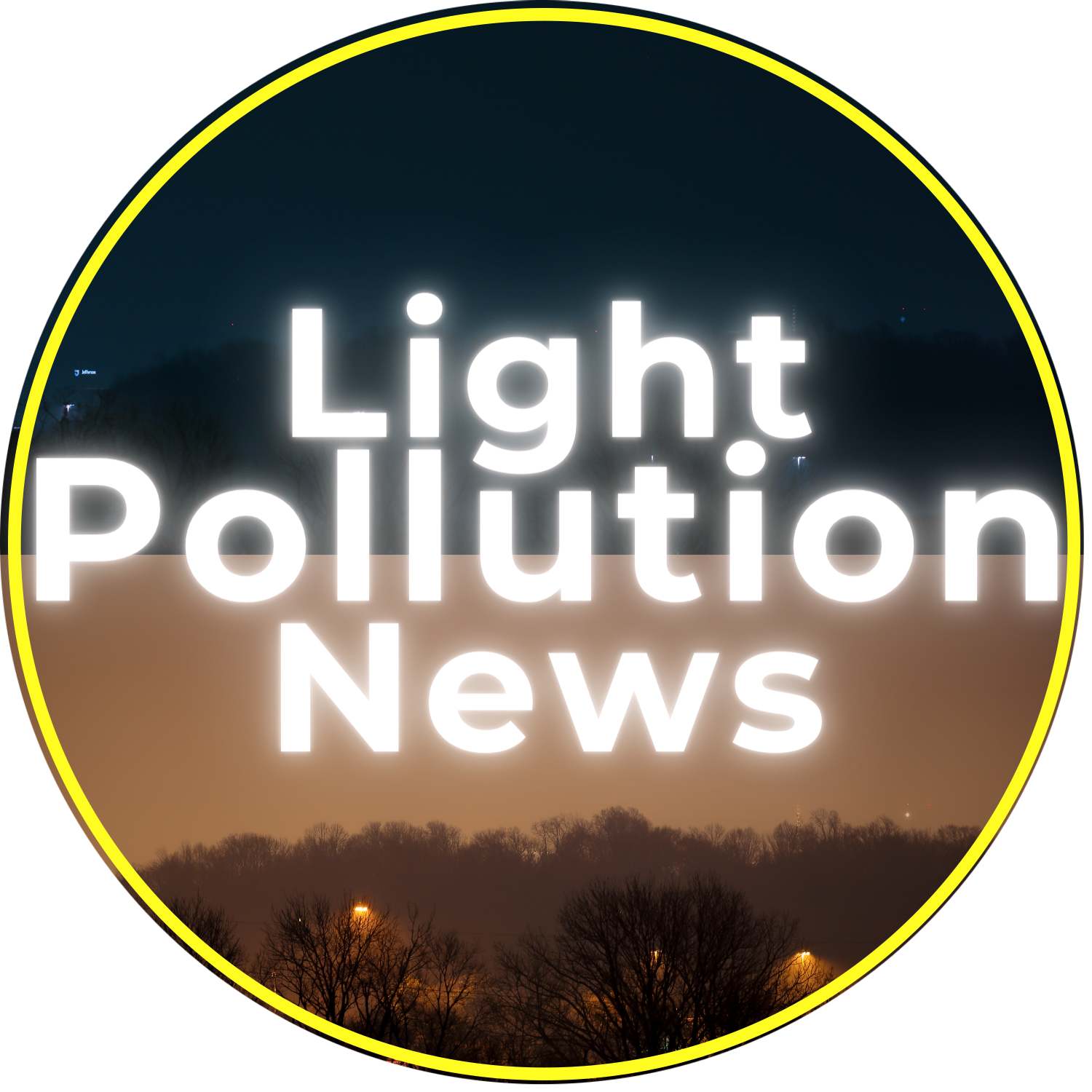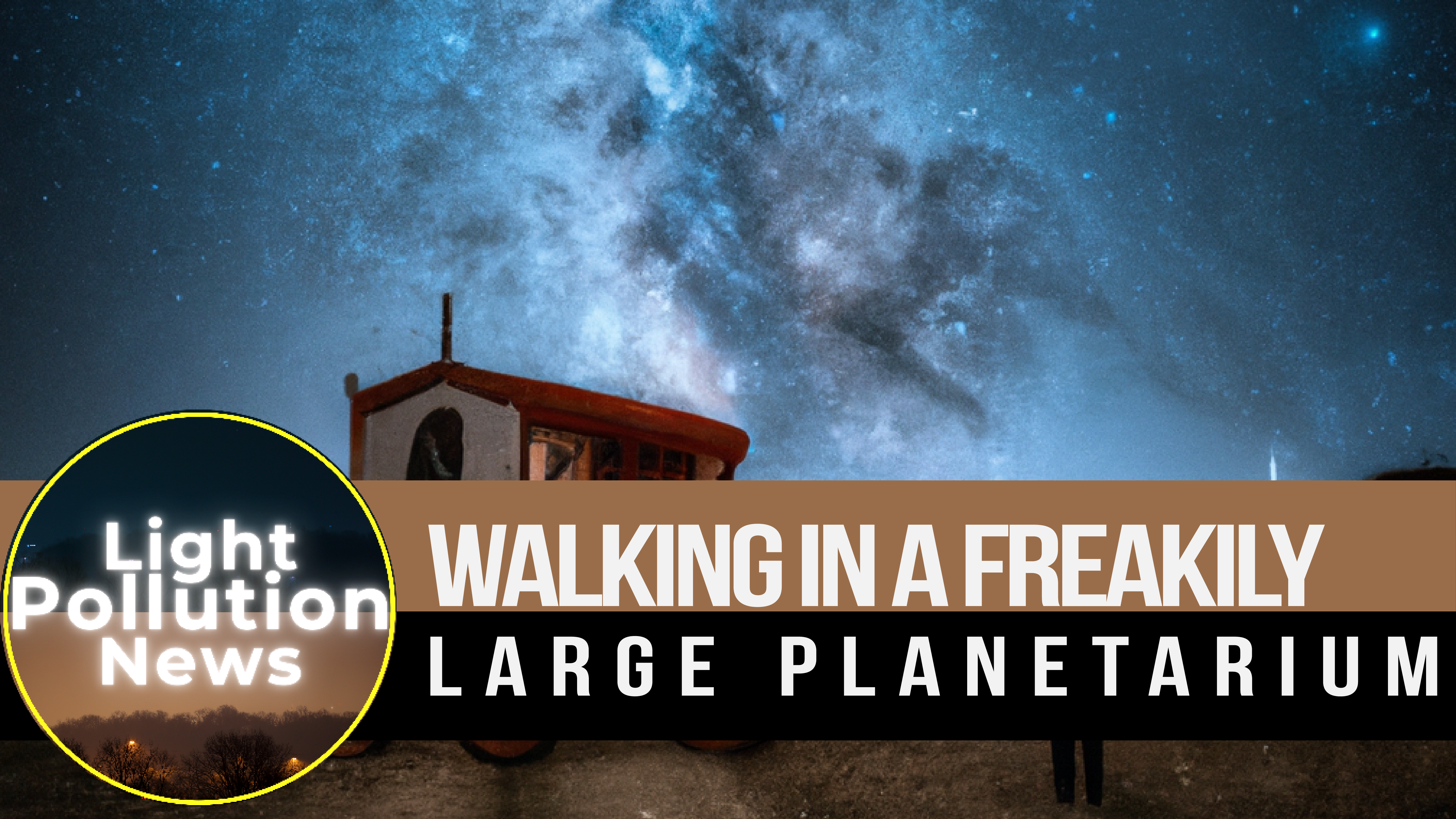
Join the conversation at r/lightpollutionnews or Follow us @Light.Pollution.News or LightPollutionNews. Join our mailing list.

January 2024: Walking in a Freakily Large Planetarium, Light Pollution News.
Host:
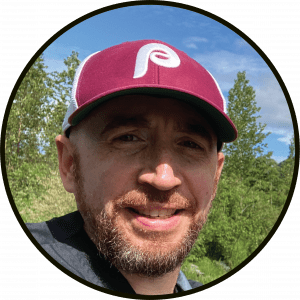
Guests:
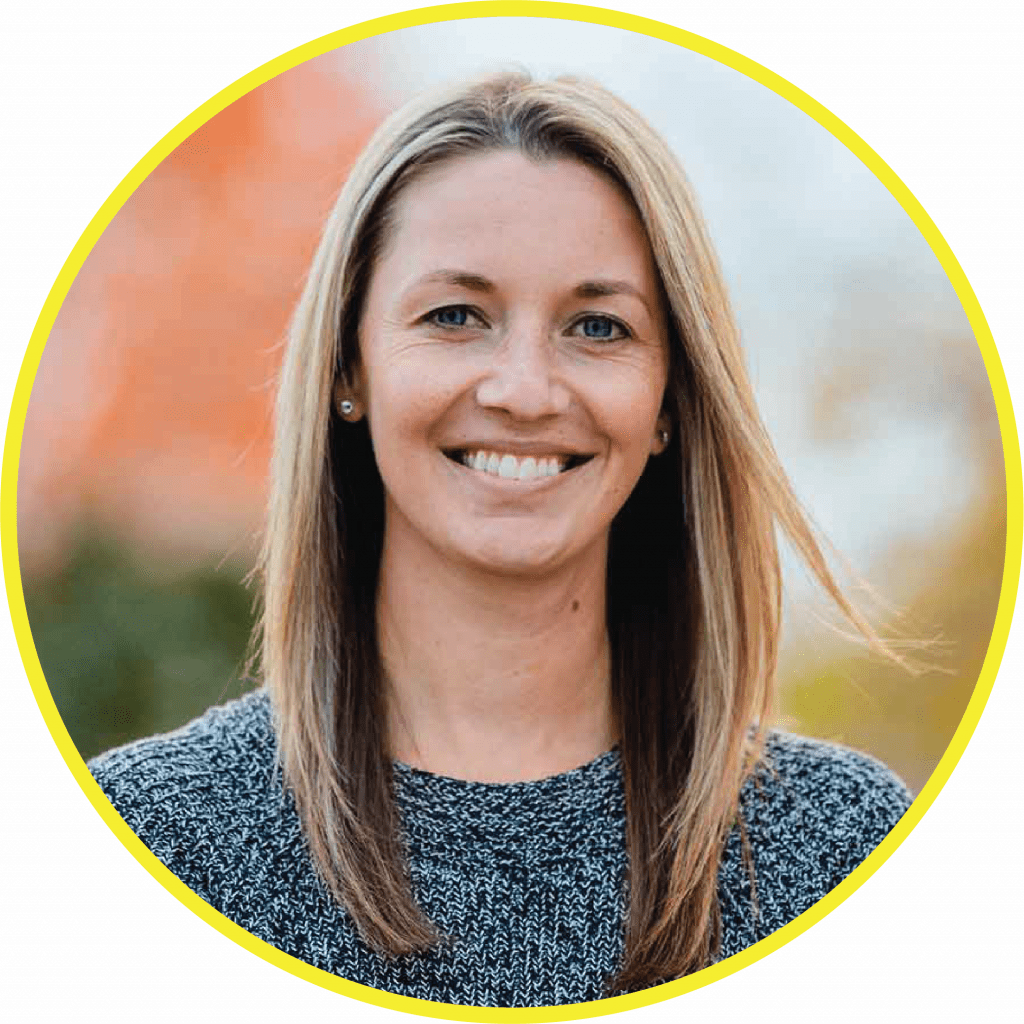
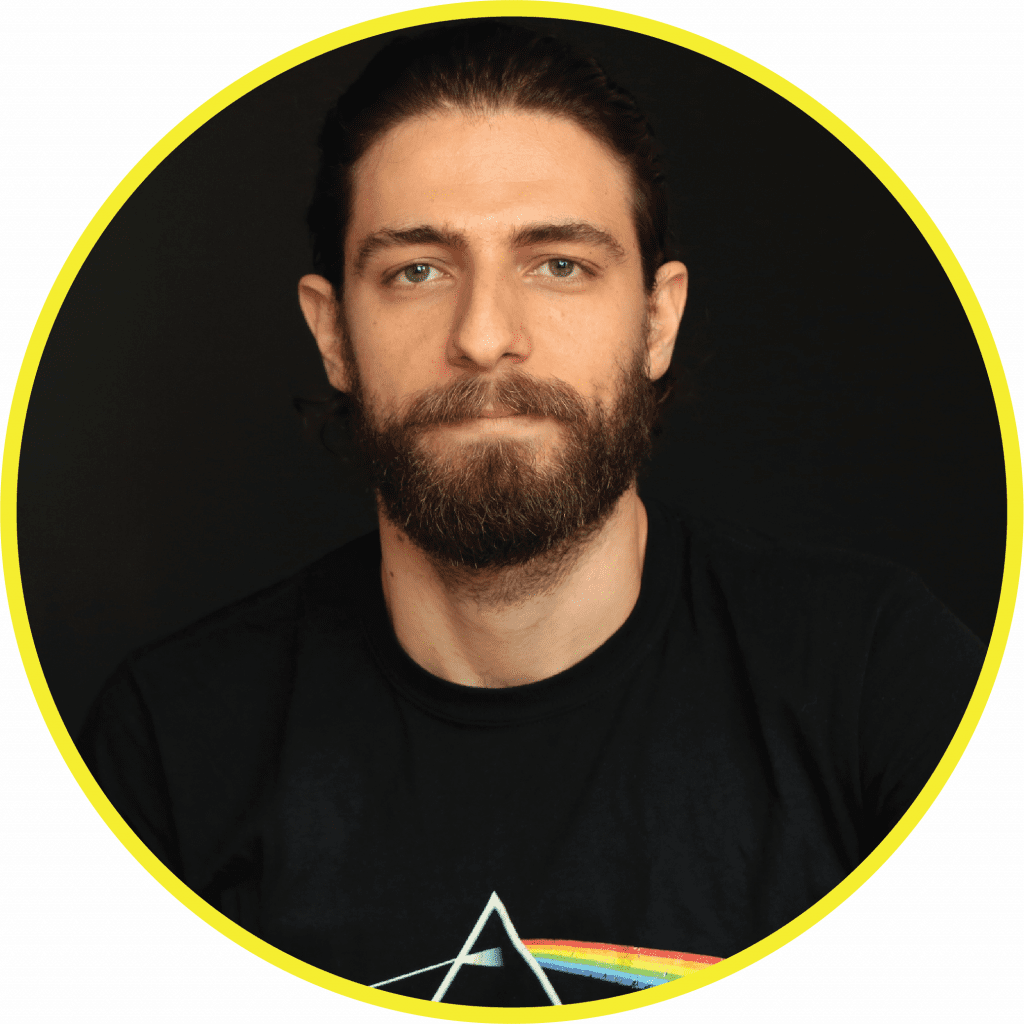
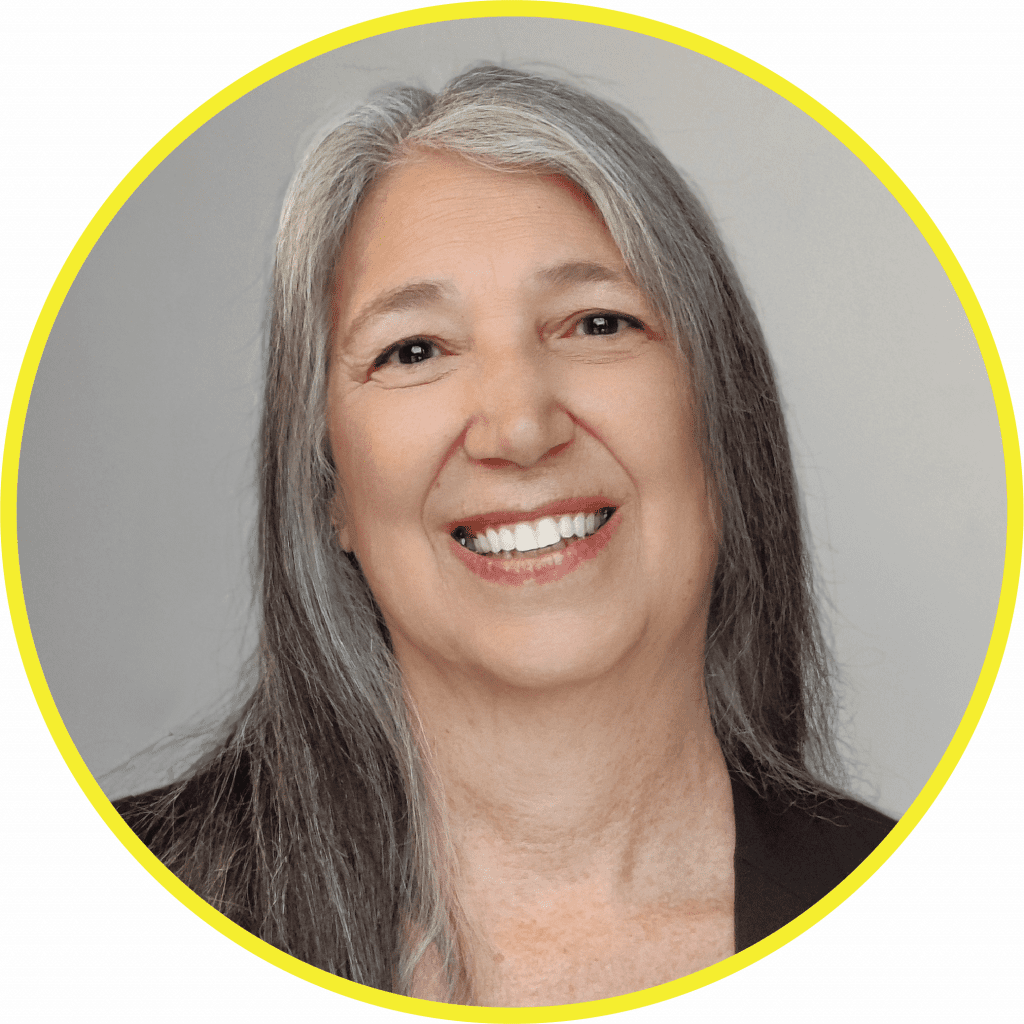
Ashley Northcotte
Ashley Northcotte is a geographer, environmental educator, and communication professional. Over her career, in both the public and private sector, Ashley has been committed to driving environmental protection and behaviour change through strategic communication plans, education campaigns, and public outreach.
With AstroBackyard, Ashley focuses on making astrophotography more accessible and inclusive through digital media. As a Dark-sky Advocate and Delegate with DarkSky International, Ashley spreads awareness about the negative and harmful environmental impacts of light pollution to drive local and global change.
Kerem Asfuroglu
Kerem Asfuroglu is the founder of Dark Source, an award-winning lighting design studio driven by environmental values based in the UK & Ireland. Following his graduation from Wismar University – Architectural Lighting Design MA in 2010, Kerem has worked in the lighting industry for almost a decade before setting up Dark Source in 2019. He has been awarded with the title of Dark Sky Defender by the IDA for advocating the importance of darkness through design. Some of his environmental lighting projects include the Plas Y Brenin Outdoor Centre, Presteigne Dark Sky Masterplan, Newport Dark Sky Masterplan, Cloughjordan Ecovillage, Clwydian Range & Dee Valley and Dark Sky Planning Guidelines for Cumbria.
Diane Turnshek
Diane Turnshek is a researcher at Carnegie Mellon University in Pittsburgh, PA. She has been on the board of directors for both the Science Fiction and Fantasy Writers of America and Parsec, Pittsburgh’s premier science fiction organization. She is published in Analog Magazine of Science Fiction and Fact and edited Parsec’s Triangulation anthology multiple times.
Article List:
- God’s Promises Are Clearest When We Turn Out the Lights, Cort Gatliff, Christianity Today.
- Crime In SA | Two Mozambicans arrested with Thekwini Municipality street lights at Kosi Bay, eNCA.
- San Diego gives final OK to $12 million police surveillance network, Lindsay Winkley, The San Diego Union-Tribune.
- MLGW ‘working hard to correct’ new LED streetlamps that aren’t working quite right, Lydian Kennin, Action News 5.
- Decorative street lighting planned for Chestnut Street, City of Jeffersonville, Indianna.
- New solar-powered streetlights popping up in southern Indiana neighborhoods, WHAS11.
- Jeffersonville Indiana, 11/1/23, Facebook.
- ‘DarkSky-approved’ lights installed on Kalamazoo Mall, Audrey Whitaker, MLive.
- The City of Kalamazoo Michigan, 10/19/23, Facebook.
- Folly Beach Installing New “Turtle-Friendly” Streetlights, Meghan Overdeep, Southern Living.
- Energy efficiency indicators in road lighting: critical evaluation in a case study, Bulletin of the Polish Academy of Sciences Technical Sciences.
- Spectacular spots across Canada to take in the stars, Meredith Hardie, CBC.
- See the Dark Festival.
- All eyes on the skies for the Mayo Dark Sky Festival, Anton McNulty, Mayolive.
- Trains, stargazing put Ely on the map. Critics fear clean energy project could undo that., Wyaat Myskow, The Nevada Independent.
- Letters | ESG is great, but let’s fix Hong Kong’s freezing air con and excessive lighting first, South China Morning Post.
- Lewes Subcommittee Looking Towards Light Pollution Remedies, Charles Reinert, Coast TV.
- Plan to switch off street lights in early hours, BBC.
- Heber Valley Utah Temple approved. See why the church agreed to dim the lighting, Tad Walch, Dessert News.
- Stays in Vegas: London mayor rejects plan for Stratford Sphere venue, Robert Booth, The Guardian.
- London mayor’s decision to reject Las Vegas-style sphere to be reviewed, PA Media, The Guardian.
- Giant lasers to light up San Francisco for APEC, Amy Larson, KRON 4.
- IlluminateTheArts.
- HELP RESTORE THE BAY LIGHTS – Introducing The Bay Lights 360!
- In Search of Bright Stars: Can the Bay Area Reduce Its Worsening Light Pollution?, Sarah Mohamad, KQED.
- Sacramento Zoo brings back extinct animals with immersive light displays, illusions, Hanh Truong, The Sacramento Bee.
- Bored Ape creator says UV lights at ApeFest burned attendees’ eyes and skin, Beth Mole, Ars Technica.
- Lowell Observatory and Grand Canyon take a glimpse into native constellation storytelling, Mason Carroll, AZ Family.
- Mitigation measures for environmental protection, European Union.
- Far-reaching displacement effects of artificial light at night in a North American bat community, Global Ecology and Conservation.
- Artificial light affects foraging behavior of a synanthropic bat, Integrative Zoology.
- Artificial light at night alters predation on colour-polymorphic camouflaged prey, Basic and Applied Ecology.
- Bats as indicators of ecological resilience in a megacity, Urban Ecologies.
- Shining a light on duckweed: exploring the effects of artificial light at night (ALAN) on growth and pigmentation, Plant Biology.
- Evaluating the effects of moonlight on the vertical flight profiles of three western palaearctic swifts, Proceedings of the Royal Society B.
- New designation has Saguaro Park singing ‘Hello darkness, my old friend’, Henry Bean, Tuscon.com.
- Sinks Canyon Is Wyoming’s First Dark Sky Park, Now Skies Will Remain Dark Forever, Andrew Rossi, Cowboy State Daily.
- Sopotnia Wielka becomes the first International Dark Sky Community in Poland, Drew Reagan, Dark Sky International.
- Stellar strategy: proposed dark sky reserve could cover 38 per cent of region, Sunshine Coast News.
- City of Cottonwood is seeking volunteers to serve on its Dark Sky Committee, Cottonwood, AZ.
- Why can’t I wish upon a star in Boston?, Meg Richards, Berkeley Beacon.
Matthias Schmidt, a guest from a couple shows back, isn’t here tonight, so I figured I could start us off with some quotes from a cover story I came across from Christianity Today. This article is a masterpiece even if you are not Christian or religious in anyway.
Per author, Reverend Cort Gatliff, “God instructs Abram to step outside his tent and gaze into the heavens.
“Look up at the sky and count the stars, if indeed you can count them! So shall your offspring be.”
Gatliff read this passage to his parishioners, then gave them the homework assignment to “look up and marvel at the glory and goodness of our Creator.”
Per Gatliff, “when I stepped outside to do some stargazing of my own,”…”, what I saw was less than awe-inspiring.
Despite it being a clear night and close to a new moon, I actually could count the stars.
There were 12.”
Gatliff continues on, “Most of us don’t realize how bright our nights are because we’ve never, or rarely, experienced a truly natural night, one unaffected by artificial light.” Gatliff then proceeds to illustrate the role the nighttime sky played in Christian and Jewish scriptures.
Gatliff even enters into the crime “debate” in an effort to walk readers up from the beginning of how we got to this point of only seeing 12 stars.
Before I open this one up, I want to make reference to this great John Adams quote in the article. Being a history nerd, I found this really interesting.
“John Adams describes darkness as a haven for “robberies, burglaries, and murders” and suggests that light from streetlamps would “chase away…all the villains” and prevent the need for hiring more police officers.”
Boy, does that not sound familiar? Adams said that in 1785!!!
Since then, we’ve added more light, and more light, and more light, and even more light to the point that you don’t even need to use your headlights when driving around in cities!
At what point does the light make the crime rate begin to go down, because it’s 2024 and using Adams’ logic, if we believe that light prevents crime, shouldn’t we be currently living in a utopian, crimeless world?
Since we’re here, let’s stay on streetlights for a bit.
Here’s an interesting story from Jeffersonville, Indiana.
Mayor Mike Moore has been on a mission – and that is to add street lighting. One part of the community is receiving 53 new shine-in-all directions acorn lights. In other areas of the community, Moore found a way to add street lighting where the utility resources proved unavailable, and that was by installing solar powered fixtures.
If you take a look at the Facebook post dated November 1st by Jeffersonville, IN, you’ll notice a couple of things.
First up, these lights are appear tall, but I think they’re probably the appropriate size. They are placed in residential neighborhoods.
Second, judging by the comments, the whole town is evidently pitch black and badly needing nighttime lighting. There seems to be an epidemic of pitch black nights in Jeffersonville.
I have two questions on what Jeffersonville is doing.
First, let’s talk fixtures, and maybe Kerem you can help educate us here. Why on earth would someone use tall acorn style fixtures to remedy a dearth of lighting? In your experience, are you at all able to run us through the thought process that might be going on?
Second, when I hear people say “pitch black” to me that indicates that there may already be plenty of light, the problem is that it’s horizontal rather than top down. And let me explain what I’m thinking.
Listeners no doubt are aware that I bike all around Philly, and while this time of year is my favorite time to bike for many reasons, night riding does bring with it its own set of challenges. And those challenges are not what you think.
The only time I see “pitch black” is when a car or, now a days, a fellow biker utilizes an overpowering light that obstructs your vision, similar to how a police officer may utilize a spotlight at a traffic stop.
It is not black outside, you can see quite fine without the aid of light.
Is it a correct assumption to believe that the phrase “pitch black” really translates to, “exceptional glare without environmental visibility?”
Now, 180 degrees the opposite of the pitch black abyss of Jeffersonville, up in Kalamazoo, Michigan, new ‘DarkSky approved’ lights have made their way into the city plan. The lights shown in the photos appear to be a top lit acorn light.
In their Facebook post dated October 19th, everyone seems to universally be cheering for ‘DarkSky’ approved lighting! What a tale of two cities!
How do you guys feel about sea turtles?
Folly Beach, South Carolina is actually replacing existing LED fixtures with 37 new turtle friendly fixtures to minimize stray light’s impact on the blue light sensitive hatchlings.
Each year, Kaitlyn and I go down to Navarre Beach in Florida and see a similar amber lighting in action. I will say, it adds to the charm of walking on the beach at night, often with the constellation Puppis passing across the Gulf.
It’s not a perfect solution, as we all know. Buildings and houses set a block off of the beach tend to not be regulated in any way, which as we’ve seen in a prior show, can still affect sea turtles.
However, do you think this kind of lighting may make people more amenable to strengthening policies down the line to protect sea turtles?
Last month we had an article on about Houghton, Michigan which the town appeared to be trying to force over a streetlighting plan on skeptical residents. And something akin to this may be why.
San Diego is moving forward with implementing its controversial surveillance state, which goes under the guise of Smart Cities. All of this comes with a hefty price tag of $5M in 2024, followed by $2M in annual maintenance.
San Diego Mayor Todd Gloria signed into law the activation orders for 500 smart cameras and “automated license plate recognition technology.” The surveillance system was paused for a few years until a proper privacy framework could be put int place. That ordinance will be reviewed again in 2026.
Wrapping up street lights, I found this research article from the Bulletin of the Polish Academy of Sciences very interesting.
It appears to indicate that there is a maximum efficiency of road lighting. In some cases the subject, San Miguel de Tucuman, Argentina blew way past that efficiency marker.
The study found that in the city center, lighting was “over-lit, doubling and in some cases tripling the minimum” requirements.
An interesting piece attempting to identify the most optimal framework to maximize street lighting efficiency.
Over to Astrotourism. Ashley, I saw this one and I had to include it!
‘Spectacular spots across Canada to take in the stars!,’ by Meredith Hardie at the CBC!
Featured in the list, you can learn indigenous tales of the sky at Metis Crossing up in Alberta. Or How about journey out to Nova Scotia to the Tobeatic Wilderness Area? And, maybe something not too far from home, Canada’s First Dark Sky Park, the Torrance Barrens Dark Sky Preserve.
A friend forwarded this my way, the annual See The Dark Festival run by the Appalachian Mountain Club, which has two locations: one at the Medawisla Lodge in the Maine Woods International Dark Sky Park and one at the more accessible Highland Center at Crawford Notch in New Hampshire, about three hours north of Boston.
The event at Medawisla Lodge takes place in October while the Mt Washington event at Crawford Notch takes places in December. Maybe keep those dates handing when you at home put together your 2024 plans.
Kerem, how was the Mayo Dark Sky Festival? It ran back in November, and even had a musical accompaniment to usher in the event, a cellist by the name of Patrick Dexter! What’s the turnout for these type of events?
Well there is news, oddly enough, an actual story in Astrotourism this month.
If you’ll recall, a couple months back I brought you the story of a Stargazing Route that spanned two International Dark Sky Parks, the National Parks of Great Basin, Nevada and Death Valley, California. Things may be changing for one of the towns along the way, the town of Ely.
Here in the US, due to the Inflation Reduction Act, there’s been a large shift toward renewable energy. Some of the renewable energy, in this case wind and solar, require additional battery storage to operate in adverse conditions.
In the case of Ely, a business by the name of R Plus Hydro is working with the Federal Energy Regulatory Commission (FERC) to essentially create a battery inside a nearby mountain. The process would remove the mountain top and utilize groundwater to retain the electrons. I’m sure for any Appalachian folk listening, that sounds a bit like ‘meet the new boss, the same as the old boss.’
Among the many complaints by the community, including the semi-obvious ones, including worries over the limited amount of ground water, the loss of hallowed tribal lands in the Sacred Water Valley, and the loss of critical habitat for the threatened sage grouse.
But also, what about the possible degradation to their tourism dollars from an antique night sky train tour?
As it currently exists, the train operator, Mark Bassett, brings riders out from the nearest lodging 60 miles away. The train stops off and tourists get out one by one take in the sparkling starry sky. According to the article, the train tour is “wildly successful” with tickets selling out a year in advance!! That’s a year in advance to take a train to see the majesty of night!
The fear is that construction of the battery will bring unwanted lights to that will negatively impact or even prohibit astrotourism dollars from being a reality in Ely.
We had a handful of interesting policy related stories this month!
First up, is there an upper limit to our seemingly infinite capacity for overlighting at night? It’s only fitting this piece comes from Hong Kong, one of the brightest places I’ve ever visited, and perhaps on the planet. I think many of you are going to relate to this.
Joe Lee, writer of a letter to the editor in the China Morning Post, boarded a 9:30 PM double deck bus only to find that the bright lighting made it difficult for people, like himself, to wind down. Lee goes onto mention that “shopping malls, train and bus stations, office buildings, roads and highways in Hong Kong are excessively bright. Lee further asserted that bright highway lighting actually provides drivers with a reckless confidence.
Let’s stay on the topic of too much light. This next one comes to us from ABC7 in New York.
Harlem resident, Brandon Gage has tried everything, from calling the building owners to his elected representatives, but no one seems eager or able to dim some egregious amount of light trespass.
The problem stems from a large set of lights angled at about 75 degrees outward with the surmised intent of covering a parking lot below. Instead they shine directly into resident’s windows.
Per Gage, “It’s shining into our homes and we should be able to have our windows open without having a halogen light, stadium lights, blasting into our apartments that we didn’t ask for.”
At least one shoreside community on the Delaware coast is considering a dark skies ordinance. Lewes, adjacent to the more notable Rehoboth Beach, is evaluating a potential ordinance that would regulate outdoor lighting within the city. The town of Lewes may be more familiar to birders who listen to this show, as it sits directly across the Delaware Bay from Cape May, NJ, a mecca for East Coast birding here in the US. Lewes is part of the Atlantic flyway, a common seasonal migration path for birds.
Cornwall, over in the UK, plans to turn down the lights between midnight to 5 AM. The measure, which looks largely to be driven by a cost cutting plan wrapped up in greenwashing justifications, is taking place at the same time the community is switching over to LEDs.
One thing to note from this BBC article, while lighting will stay at full capacity in areas deemed necessary, such as hospital entrances, road intersections, and town centers, the Cornwall Council noted that “other councils had not seen an increase in crime or road accidents when adopting similar schemes.”
Who would have thought?
There’s been a lot written on a planned Latter Day Saints Temple construction in Heber Valley, Utah. I’m not going to rehash too much here, as I’ll be honest, I’m not the best person to be talking on this topic.
In short, here’s what happened. The Church of Latter Day Saints wanted to build a temple. Immediately, folks had concerns about the traffic, water usage and sky glow impact of the Temple. Well after much contention, it appears that the Church of the Latter Day Saints got their wish.
The points of the agreement with the County include the following:
- All outdoor lighting turns off at 11pm.
- Until then, the walls will be washed in 3000K lights, down from 4000K for other Temples. Wall washing will be quote “minimized,” whatever that means.
- And a static red light will be placed atop the tower for aircraft.
The dispute sat steeped in zoning regulations.
And, of course it wouldn’t be a policy segment without some news on the Sphere, this time the MSG Sphere (the British counterpart to Vegas’s gigantic glowing globe)!
If you’ll recall, last time we visited our heroes, billionaire James Dolan was doing his very best to shove the MSG Sphere down the throats of terrified residents.
Strafford residents looked to Vegas in absolute horror to what would befall on their community should a second sphere be built there!
Well on November 20th, London Mayor, Sadiq Kahn, rejected the MSG Sphere’s application under the guise of causing “significant light intrusion resulting in significant harm to the outlook of neighboring properties, detriment to human health and significant harm to the general amenity enjoyed by residents of their homes.”
To his credit, benevolent billionaire James Dolan did offer residents black out curtains, simply out of the kindness of his heart.
Then, on December 2nd, British Housing Secretary Michael Gove decided to utilize a “call in” to review the reasonableness of Kahn’s rejection.
To which billionaire James Dolan’s spokesman quipped, “As we said previously, we will focus on the many forward-thinking” suckers, um, I mean “cities.”
I want to get your thoughts on a some art related articles.
An intensely bright exhibit of “unity” lit up San Francisco’s main commercial area for a four day span between November 13th to November 16th in support of the APEC (Asia-Pacific Economic Cooperation) 2023 Summit. The lights, including 12 laser beams angled upward 3 degrees from the Harry Bridges Plaza to the Twin Peaks park area of the city.
The lasers ran all night from sunset to sunrise. APEC planners initially cut the laser exhibit from their budget due to cost constratins. However, two nonprofits, Illuminate and the Civic Joy Fund, were able to cover the $150k price tag via a crowdfunding campaign.
Illuminate San Franisco, is an art based nonprofit who uses light as a main feature in public art exhibits. The organization does appear to have deep pockets, apparently from donations.
Illuminate is the same organization behind an attempt to relight the Bay Bridge with “double the number of LEDs wrapping both sides of the cables” to make the “artwork” more visible” to the entire bay area.
They currently have over $8.5M raised and are looking to close the gap in increments of $1M. Their current campaign is sitting at $500k.
According to Globe at Night, the Bay Area (inclusive of San Francisco and Oakland, and surrounding areas of California), experienced a 7% year of year increase in sky brightness during the ten year span of 2011 – 2022.
I should note, future Democratic hopeful, Gavin Newsome shot down AB38, a responsible lighting bill that attempted to curtail reckless lighting practices on public land. Alex Lee reintroduced AB38 to the California Assembly in December of 2022, whereby it has since been held in suspension. The justification for the veto by Newsome was cost. I’ll leave it to you at home to debate the merits of Newsome’s justification.
Not far from San Francisco, over in Sacramento, the Zoo plans to premier the art exhibit ‘Unextinct.’
Unextinct provides an “immersive experience of light and sound” utilizing projectors synchronized with sounds. To visualize this at home, it’s actually pretty neat what they’re doing. They’re projecting realistic video in a dim environment to highlight 40 extinct and endangered species.
Diane, you had something you wanted to share: a policy brief from the European Union that came out in November which details justification and action for mitigating the problems of excess or misdirected lighting.
Why don’t you tell us a little about this brief. The term “brief” is a bit of a misnomer, this document is a one stop shop for all of your light pollution ecological research. What a great find!
Since we’re here already, let’s do the ecological round up.
We know more about bats this month!
- From Global Ecology and Conservation, dim lights still impact bats. Specifically, little brown bats were the big losers from light pollution. Little brown bats not only made up a smaller percentage of the population around exterior lighting, but similarly experienced decreased foraging activity even when a very dim (less than 1 lux light source) was located upwards of 75 meters away.
It was found that big brown bats experienced a reduction in foraging upwards of 25 meters from a light source. The light source used in this study had a max of 75 lux.
- From Integrative Zoology, researchers identified a steeper drop off in foraging behavior, echolocation vocalizations and increased freezing behavior (the temporary pause in bat movement) when exposed to LED lights. While all LED colors impacted the Asian parti-colored bats studied in this experiment, Green, yellow and red appeared to be the most detrimental.
- In Urban Ecologies, a comprehensive study of bat populations in Mexico City found that bats’ sensitivity to environmental factors including environmental pollutants of all types, inclusive of light, made them a prime indicator of urban habitat health.
Now the rest.
- Light colors have an impact on predation. A study in Basic and Applied Ecology looked at the rate yellow and brown snails were attacked under a natural night setting, under broad-spectrum artificial light, and a warmer “mitigated” artificial light.
Both sets of snails saw a dramatic decrease in predation under the broad-spectrum artificial light. In fact, the predation chances even flipped to favor the yellow snail under broad-spectrum light. When mitigated, predation rates similarly decreased but to a much lower extent, with the yellow snail edging out the brown snail.
- Using a 3000K LED lamp, researchers in Plant Biology found that artificial light impact impacts duckweed. The study paired a set of the plants utilizing LED lighting all night against the control, which retained a dark night setting. The study found a substantial growth variation in favor of the plants given artificial light.
The total leaf area of the experimental group exceeded the control but also showcased increased protective dark pigmentation, for which researchers believe is a defense mechanism to reduce stress induced cellular damage.
- Oh, and let’s not forget the birds!
An interesting study in the Proceedings of the Royal Society B on common, pallid and alpine swifts reveals a possible flight connection to the moon. There appears to be a direct relationship between common and pallid swifts’ flight height to the moon’s level of luminosity. Similarly, all three species extend their nighttime foraging under increased moonlight.
We have one health related item this month.
A study from Occupational and Environmental Medicine did not identify a correlation between artificial light at night as it pertains to a cardiovascular disease driven death versus a natural causes driven death. The study looked at a sample size of 273k individuals. The researchers in this case looked at mortality rates and attempted to correlate against a brightly lit environment as defined by the use of “time-varying satellite data.’
Designations this month!
Here we go. Welcome the 92k acre Saguaro National Park in Arizona as an Urban Night Sky Place!
Wyoming receives its first Dark Sky Park designation at Sinks Canyon.
And, someone’s going to have to help me with the pronunciation here, Poland receives its first Dark Sky Community at Sopotnia Wielka!
And pay attention if you live down under, the Sunshine Coast, located about an hour and a half north of Brisbane in Queensland, Australia. The community is attempting to preserve 900 square kilometers (that’s roughly 560 miles) of the Mary River Catchment as a Dark Sky Reserve. Dark Sky reserves require a minimum of 700 square kilometers of dark sky along with dedicated community commitments to maintaining those dark skies.
How about this?
The town of Cottonwood, AZ is looking for a few good dark sky committee members to “assist in coordination of dark sky events, education and outreach, annual reporting, and sky readings.” This is because Cottonwood has been a Dark Sky Community dating back to 2019.
There you have it, while parts of the world’s night skies are going to hell in a handbasket, it’s good to know that some people still do enjoy the finer things in life!
Finally, I think this is an appropriate way to close out tonight’s show, the first show of 2024.
You know, sometimes I come across student run college newspapers, and the writing is exactly as you expect. Not sensational, but also not without heart.
Meg Richards, writing for Emerson University’s Berkeley Beacon, weaves together a familiar story to us all. In short, Richards is surely suffering from what John Barentine terms, Noctaglia.
Let’s finish tonight with a reading from Richards’ op-ed.
“ This past summer, my boyfriend hosted bonfires on his parents’ farm for all our friends and coworkers to hang out at.
During the final bonfire of the summer, we decided to sleep outside on his trampoline and look up at the stars. Since he lives on a property with a lot of open space, it was the most stars I’ve ever seen at once.
Suddenly, right before we both dozed off, we saw a shooting star in our sleepy haze. That star has been the muse for all my shitty poetry and watercolor paintings ever since.
One of my favorite pastimes in Virginia is stargazing. With the open countryside just a stone’s throw from my house, I maintain that we have the perfect view for stargazing.
When I come home from a long night of work, the best way for me to decompress is to look at the stars for a good 10-20 minutes before heading inside to debrief with my parents…
…There’s something about looking up and being reminded that the universe is so much bigger than us. It melts my worries and qualms away instantly….
…Once I came to Boston, I could no longer use this therapeutic technique. My first outing into Boston Common at night, marked the moment I couldn’t find a single star, even on a clear night.
Amidst the glow of buildings, car headlights, buses, and streetlights, the city’s lights polluted the night sky, making it impossible to see any constellations—let alone a shooting star…
…When you consider the multiple skyscrapers, marquees, and streetlights that a city like Boston has, it’s no wonder [that] a once incandescent scene in the sky is nothing more than dull gray and starless….
…As of 2020, Massachusetts was the only state in the northeast that had yet to pass legislation combating light pollution.
This light pollution map shows how light pollution affects different areas of Massachusetts.
The light gray area, also known as Boston, is classified as “Sky is bright and discolored everywhere. Most people don’t look up.”…
…Until then, I will go home a couple times a year and soak up the stars. I will sleep outside and point out my favorite constellations with my dad.
I will take low quality pictures on my phone and think of Boston, who doesn’t yet know the power of the stars reminding you how small life is, and how big it could be….”
